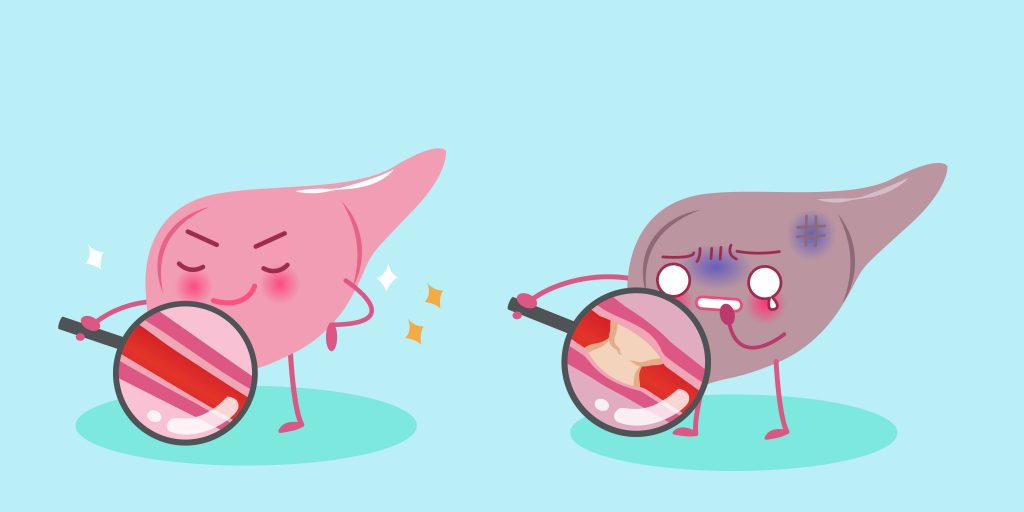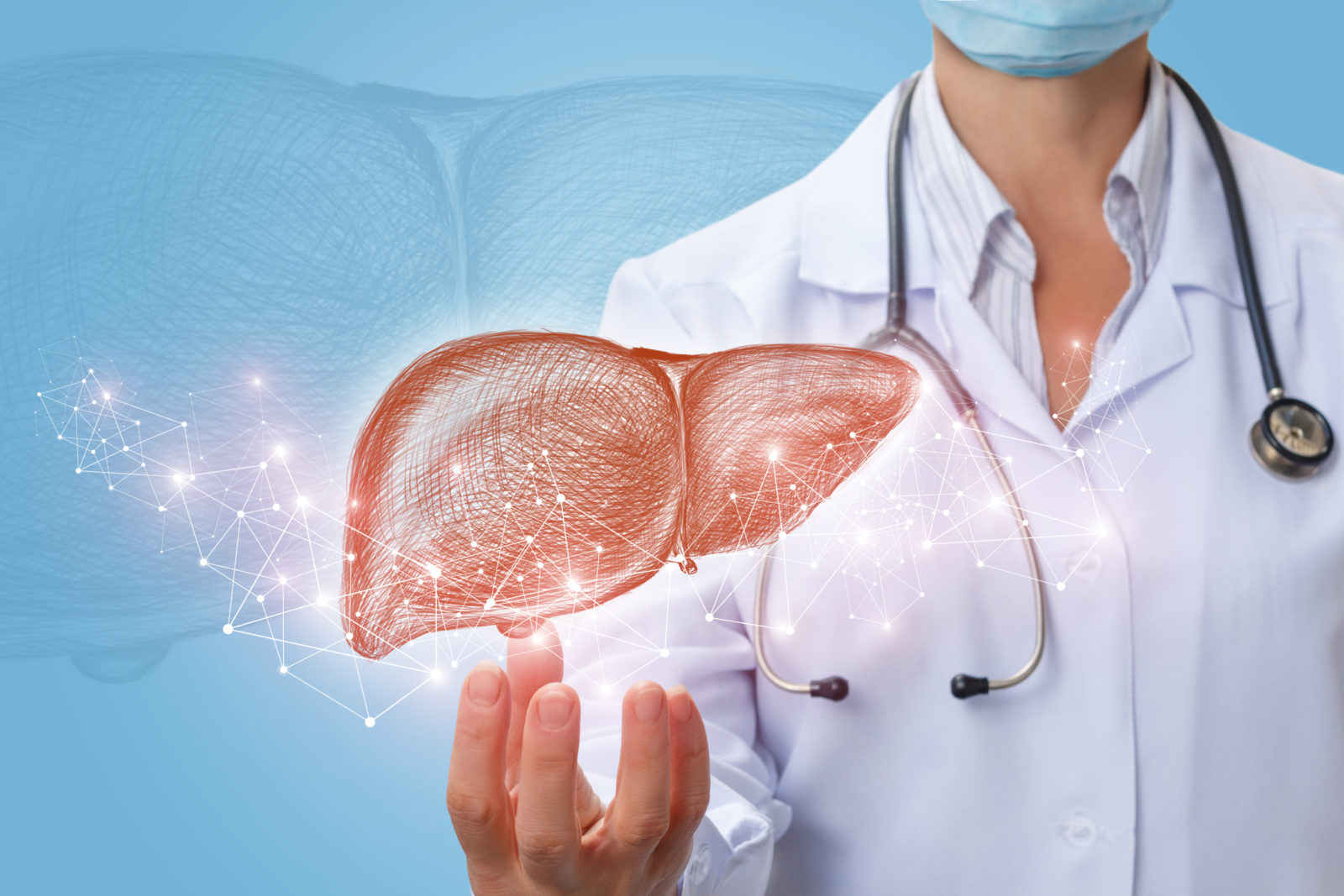The liver is the largest internal organ and one of the most important organs in the body. A few of its main functions are (a) Metabolic — glucose homeostasis, (b) Synthetic — interconversion of nutrients, binding protein for iron, copper and vitamin A, (c) Storage — of vitamins and minerals, glycogen, and lipids, (d) Catabolic —detoxification, phagocytosis [bacterial metabolism], hormones, synthesis of blood components, (e) Excretory — bile production (Regan, J., et al. 2011) (Marieb, E.N. 2012).
Role of the Liver in Detox
One of the roles of the liver is detoxification. Substances ingested or produced by the body (a by-product of metabolism) will eventually get filtered through the liver. There are two phases of detoxification; Phase I and Phase II.
In Phase I the body draws in stored fat-soluble toxins from the body’s tissues. These toxins enter the body (via food – the mouth – the nose or the skin) and if allowed to pass the barrier of the intestine make their way into our bloodstream. They are the last thing you would ever want to be floating around in the cardiovascular system, therefore they have stocked away in fat, nerves, brain and kidney tissues, etc. until they can be properly and safely disposed of.

Phase II takes these toxins and prepares them for their exit from the body; a water molecule is added to each fat-soluble chemical allowing them to depart the body safely.
Phase I Liver Detoxification
Detoxifies drugs such as; codeine, warfarin, prednisone, steroids, and alcohol. For these toxins to be cleared out the following nutrients are required; copper, magnesium, zinc, vitamin C, molybdenum, antioxidants & bioflavonoids.
Foods and other things that turn on Phase 1 (Activators)
Broccoli, cabbage, Brussels sprouts, caraway, dill seeds, oranges, tangerines, vitamin B1, niacin, vitamin C, charbroiled meats, alcohol, nicotine, some drugs, chemicals, dioxin, pesticides.
Foods and other things that turn off Phase 1 (Inhibitors)
Drugs including antihistamines, stomach acid blockers, ketoconazole, naringenin (from grapefruit juice), turmeric, green tea, red chili pepper, clove oil, onions (quercetin), calendula, milk thistle, aging, hypothyroid, toxins from inappropriate intestinal bacteria.
The liver must function in a balance if Phase 1 is functioning either to quickly or too slowly its detox potential will not be there and instead of filtering chemicals out of the body, they will be re-embed into the body’s cells. To assess is Phase 1 is functioning optimally try a caffeine clearance test.
Phase II Liver Detoxification
Phase II is the second part of Liver detoxification. Detoxifies drugs such as; acetaminophen, nicotine, caffeine, pesticides, epoxides, aspirin and benzoates. For these toxins to be cleared out the following nutrients are required; glutathione, vitamin B6, glycine, SAMe, methyl groups, molybdenum, cysteine, acetyl CoA and others.
Foods and other things that turn on Phase 2 (Activators)
Brassica family foods, limonene (found in the peel of citrus fruits, as well as herbs dill and caraway), glycine, methyl donators, taurine, and fish oils, birth control pill and some drugs.
Foods and other things that turn off Phase 2 (Inhibitorsos)
A deficiency of glutathione, folic acid, Vitamin B1. B2, B5 and B12, selenium or zinc. A diet low in protein, aspirin,
The liver will do its best to break down toxic substances into less toxic forms that can be easily eliminated from the body, however for those that cannot be they are stored in the liver and other tissues throughout the body. If one of the phases of detoxification is working either too quickly or too slowly due to deficiencies in nutrients, an imbalanced diet or a high intake of medication many of the toxins that enter the body will not be cleaned out properly.
If Phase I is moving too quickly and Phase II is working too slowly or as it should, it will not be able to keep up with the demand of Phase I and some toxins may be let into the body, the same can occur if Phase II is working faster than Phase I, as it may not process chemicals as effectively. To learn how to tell if one of your liver detox Phases is out of balance, to a Caffeine Clearance Test.
How to Improve Liver Function
There are many ways to improve liver function. Making positive changes to diet and lifestyle can make a big impact, so it can limiting exposure to synthetic chemicals.
Reducing Exposure to Synthetic Chemicals
Choosing products that are better for the planet is also better for your body. The body does that the systems in place to help to eliminate the toxins that we come in contact with each day, however, most of us living in this modern world have our organs overtly taxed. Reducing the use of chemical cleaners will ease the pressure off of the body. Switching to a natural cleaner does not need to be expensive, it can be as easy as using vinegar and baking soda.
Synthetic chemicals also mean reducing our exposure to plastic products. Not only is it better for the planet, but it is also better for the body. Apart from detoxing chemicals and waste produced by the body and accumulated from the environment, the liver also eliminates excess hormones. Hormones include estrogen, testosterone, etc. There are a growing number of people affected by endocrine disease or hormone-related illnesses, such as PCOS, hypothyroidism and hyperthyroidism, cardiovascular disease (high cholesterol) and adrenal insufficiencies. Many volatile organic compounds and plastic products are endocrine mimickers and disruptors. Reducing their use will not only benefit your hormonal health but also the health of your liver.
Reduce the use of makeup or switch to a natural plant-based brand. Most makeup on the market contains heavy metals, that either seep into the body through the skin or are ingested (such as through the use of lipstick). Reducing their use or switching to a natural alternative will each the liver and also benefit the skin.

Consume Foods that Benefit the Liver
Our diet plays a big roll in either benefiting the liver in its function or making it work extra hard to clean the body. A diet based on processed foods, junk food, tons of sugar and devoid of most vegetables and fruit is not one that is supportive of the livers functions. A diet rich in wholefoods, that primarily focusing on being plant-based is one that can make positive changes to the body and support the liver. Certain whole foods are important to include in your diet as they aid in improving and strengthening liver function. You want to include a variety of foods that support both phases of the liver.
Foods rich in molybdenum and vitamin C will be beneficial for both phases. Citrus fruits and parsley are a great source of vitamin C. Beans, green peas and oats are rich in molybdenum. Antioxidants, required by both phases, assist in reducing tissue damage and oxidative stress. Recommended sources of antioxidants are cabbage, black raspberries, turmeric, and spirulina.
Cruciferous vegetables
Common cruciferous vegetables are arugula, broccoli, cauliflower, kale, Brussels sprouts, turnips, and cabbage. They are strong detoxifiers of our liver. These vegetables contain certain chemicals that neutralize toxins. They also help in the production of enzymes needed for detoxification. Cruciferous vegetables are a rich source of beta-carotene, the plant form of vitamin A (a precursor to active vitamin A). Not only is beta-carotene a potent antioxidant and immune booster it also helps to strengthen the liver against disease and toxins.
If you have issues with your thyroid, or experience excessive gas when consuming cruciferous vegetables try incorporating them in soup or cooking them to remove goitrogens and make the vegetable more digestible.
Beetroot
Beetroot should be included in the diet for a healthy liver. Beets are rich in phytonutrients known as betalains. They support phase 2 detoxification in the liver. Betaine a type of betalain supports the liver against the harmful effect of toxins. Beet phytonutrients are also antioxidants, antiinflammatory and beneficial for optimal well-being, especially that of the liver.
Apples
Apples are a great source of insoluble and soluble fiber, assisting with waste removal from the gastrointestinal tract as well as supporting beneficial bacteria. Pectin is a soluble fiber. Daily bowel movements aid in reducing the burden on the liver by eliminating waste from the body. Apples are also a great source of vitamin C and phytonutrients. These compounds aid in reducing inflammation, free radical damage and oxidative stress.
Warm Water and Lemon
Lemons provide a good source of vitamin C, which is an important antioxidant for strengthening the liver. When starting the day off with warm lemon water (lemon juice added to warm water) you not only ignite digestion 9by stimulating the flow of bile, you also provide the liver with a great antioxidant boost. By increasing the bile flow, the cleansing of the liver is more effective. The bile juice removes unwanted substances from the liver and later the digestive tract and takes them out.
Turmeric
Turmeric‘s main phenolic compound is curcumin. Curcumin provides the spice with most of its health benefits. Curcumin promotes the increase of bile secretion from the liver. Not only does this stimulate digestion and the assimilation of nutrients it also aids in the elimination of toxins from the liver. Additionally, it aids in the removal of heavy metals (cadmium and lead) from the body and aids in detoxification. This reduces the toxic load for Alzheimer’s patients and aids in the reduction of their symptoms.
Garlic
Garlic is rich manganese, vitamin B6 and vitamin C. It also contains an array of sulfur compounds that aid in supporting both phases of liver detoxification. Sulfur compounds include methionine, cysteine, glutathione, allicin, among others.
Black Raspberries and Other Berries
Black raspberries are potent antioxidants, reducing free radical damage and stress throughout the body. Various berries, such as mulberries, strawberries, blueberries, blackberries, and raspberries contain bioflavonoids, a type of phenolic compound. Bioflavonoids are liver protective and aid in both phases of liver detoxification. Antioxidants protect the liver from the free radicals which are produced by the liver as a byproduct of certain chemical detoxification. These free radicals are harmful to the body.
Bitter greens
The bitterness present in the leafy greens helps in the stimulation of bile in the liver. Bitter greens include chicory, dandelion, endive, arugula, radicchio.
References
Holford, P. (2004). The Optimal Nutrition Bible. London: Piatkus.
Jensen, B. (1999). Dr. Jensen’s Guide to Better Bowel Care. A complete program for tissue cleansing through bowel management. New York: Avery.
Lipski, E. (2012). Digestive Wellness (4th ed). United States, McGraw-Hill.
Krop, J.J. (2002). Healing the Planet, One Patient at a Time. Canada, KOS Publishing Inc.
Murray, M.T., & Pizzorno, J. (2012). The Encyclopedia of Natural Medicine (3rd ed). New York, Atria Paperback.
Lee, S.D. Lo, K.J., Lu, R.H., Shyu, J.K., & Wang, Y.L. (1996). Caffeine clearance test: a quantitative liver function assessment in patients with liver cirrhosis. Taipei. Zhonghua Yi Xue Za Zhi, 57(5), 329-34.
Dancygier, H. (2010). Clinical Hepatology, Principles, and Practice of Hepatobiliary Diseases Volume 1. New York, Springer.
Demeda, P. (2014). Lecture on Clinical Detoxification. Personal Collection of P. Demeda, Institute of Holistic Nutrition, Mississauga Ontario.
Regan, J., Russo, A., Seeley, R., & VanPutte, C. (2011). Seeley’s Anatomy & Physiology (9th ed). New York, NY: McGraw-Hill Companies Inc.
Marieb, E.N. (2012). Essentials of Human Anatomy and Physiology (10th ed). San Francisco, CA: Pearson Education, Inc.
Amanda Filipowicz is a certified nutritional practitioner (CNP) with a bachelor in environmental studies (BES) from York University. She also has certification in clinical detoxification, prenatal and postnatal care as well as nutrition for mental health. She has been working as a nutritionist since 2013 and is a lifelong proponent of eating healthy.

